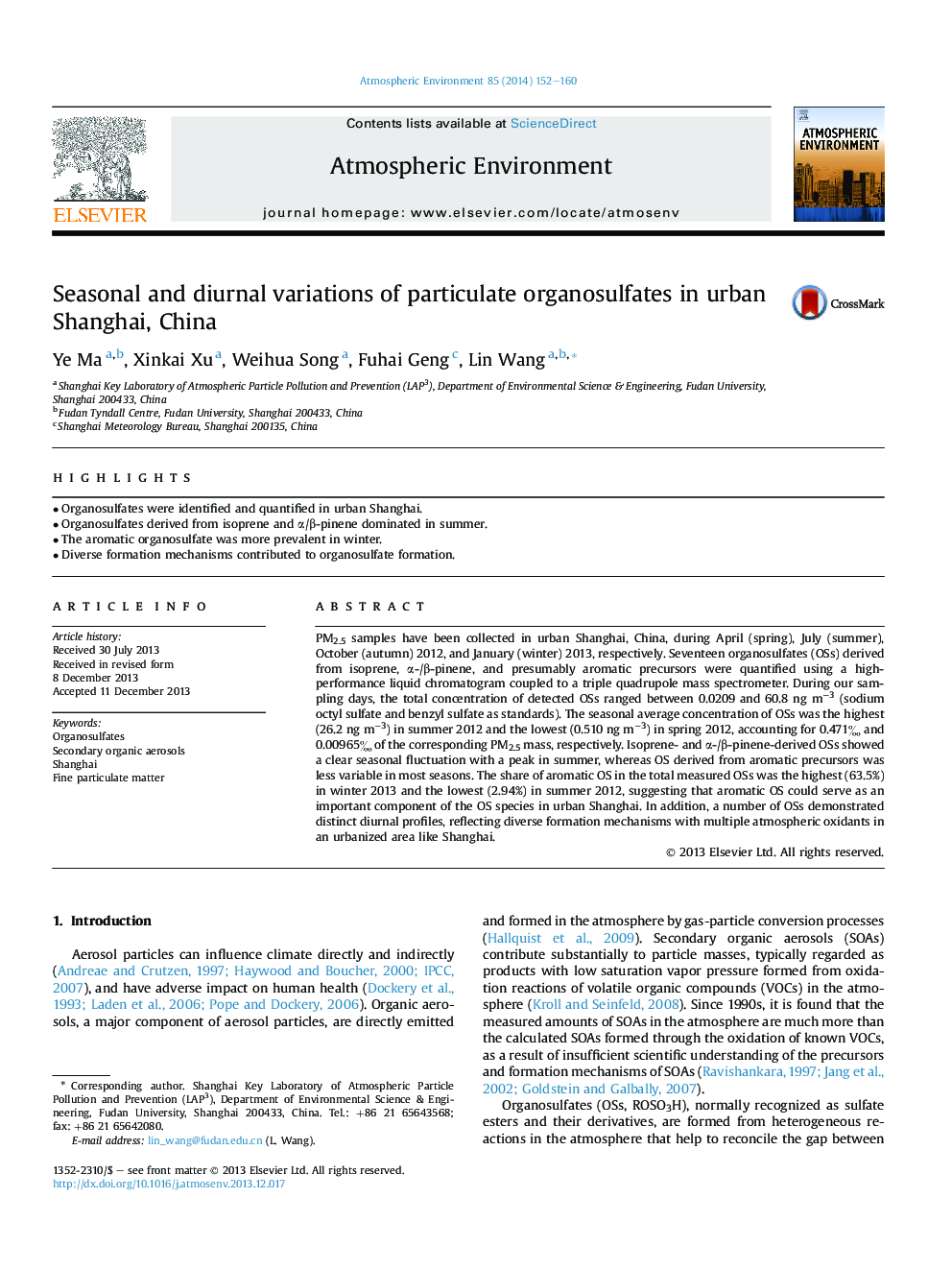| Article ID | Journal | Published Year | Pages | File Type |
|---|---|---|---|---|
| 6341021 | Atmospheric Environment | 2014 | 9 Pages |
Abstract
PM2.5 samples have been collected in urban Shanghai, China, during April (spring), July (summer), October (autumn) 2012, and January (winter) 2013, respectively. Seventeen organosulfates (OSs) derived from isoprene, α-/β-pinene, and presumably aromatic precursors were quantified using a high-performance liquid chromatogram coupled to a triple quadrupole mass spectrometer. During our sampling days, the total concentration of detected OSs ranged between 0.0209 and 60.8 ng mâ3 (sodium octyl sulfate and benzyl sulfate as standards). The seasonal average concentration of OSs was the highest (26.2 ng mâ3) in summer 2012 and the lowest (0.510 ng mâ3) in spring 2012, accounting for 0.471â° and 0.00965â° of the corresponding PM2.5 mass, respectively. Isoprene- and α-/β-pinene-derived OSs showed a clear seasonal fluctuation with a peak in summer, whereas OS derived from aromatic precursors was less variable in most seasons. The share of aromatic OS in the total measured OSs was the highest (63.5%) in winter 2013 and the lowest (2.94%) in summer 2012, suggesting that aromatic OS could serve as an important component of the OS species in urban Shanghai. In addition, a number of OSs demonstrated distinct diurnal profiles, reflecting diverse formation mechanisms with multiple atmospheric oxidants in an urbanized area like Shanghai.
Related Topics
Physical Sciences and Engineering
Earth and Planetary Sciences
Atmospheric Science
Authors
Ye Ma, Xinkai Xu, Weihua Song, Fuhai Geng, Lin Wang,
